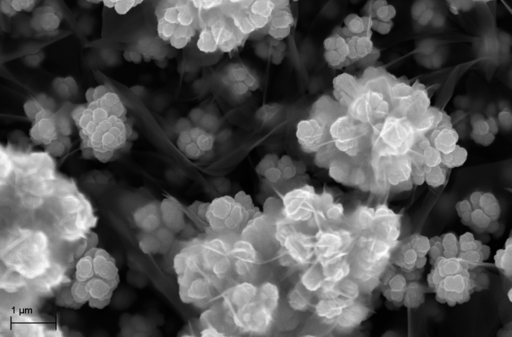For the first time, scientists and engineers have observed how two types of nanoparticles made from different materials combine to create new composite materials. This discovery could help experts gain more control over the assembly of materials that integrate the desirable characteristics of each particle.

Challenges in Creating Composite Structure
Composite structures refer to a binary nanocrystal superlattice that may stand alone to be bonded to other materials. They can be used for electronic devices, optical devices, and energy production and storage.
In creating binary nanocrystal superlattices, engineers usually integrate nanoparticle building blocks in a solution and allow a droplet of the solution to dry out. As this droplet sinks, the particles unite to form the desired superstructures. Engineers typically hit the crystals with X-rays to observe the resulting nanocrystal structures. In each crystal structure, X-rays are scattered in a unique pattern, serving as a fingerprint in identifying the crystals.
Observing the assembly of those crystals in real time has been a challenge for scientists because they form too fast for most X-ray scattering methods. Without witnessing the steps leading up to the final structure, experts are left guessing the formation of superstructures from nanocrystal mixtures. If the reaction of these materials with one another is figured out, engineers can create a more comprehensive library of the structures that can form when combined.
Observing Superstructure Growth in Real Time
A collaborative team of researchers from the University of Pennsylvania and the University of Michigan has observed composite superstructure growth from nanocrystals in real-time. Led by Penn Integrates Knowledge (PIK) professor Christopher B. Murray, the scientists designed new materials that unite different functions in ways that are not possible with the materials that are currently available.
The first real-time X-ray scattering measurements of the superlattices were created by slowing down the assembly process and using faster X-ray scattering techniques. This was done with the help of the National Synchrotron Light Source II at Brookhaven National Laboratory in Upton, New York.
The process also involves mixing different nanoparticles into an oil emulsion and placing them in water. As the oil diffused into the water, the nanoparticle mixture shrank, but much more slowly compared to the conventional air-drying method. According to study co-author Esther Tsai from the Brookhaven National Laboratory, this is possible because their facility has a high X-ray influx and rapid data collection, which could keep up with the speeds at which the crystals formed.
From this study, the researchers discovered that binary nanocrystal superlattice assembly takes place through short-range attractions between the nanoparticle building blocks, regardless of the kind of nanoparticle used. It was also confirmed that no intermediate phases are formed before the final crystal and that the surface of the emulsion droplets did not contribute to crystal formation.
The simulations suggest that the strength of the nanocrystal interactions serves as the main factor in determining superlattice structure in the shrinking droplets. Additionally, the interaction strength can be altered with the size and electric charge of the particle or by adding some elements to these components.
RELATED ARTICLE : Scientists Discover The Ability to Determine Semiconductor Nanocrystals with Optical Crystallography Method
Check out more news and information on Nanocrystal in Science Times.
© 2025 ScienceTimes.com All rights reserved. Do not reproduce without permission. The window to the world of Science Times.












